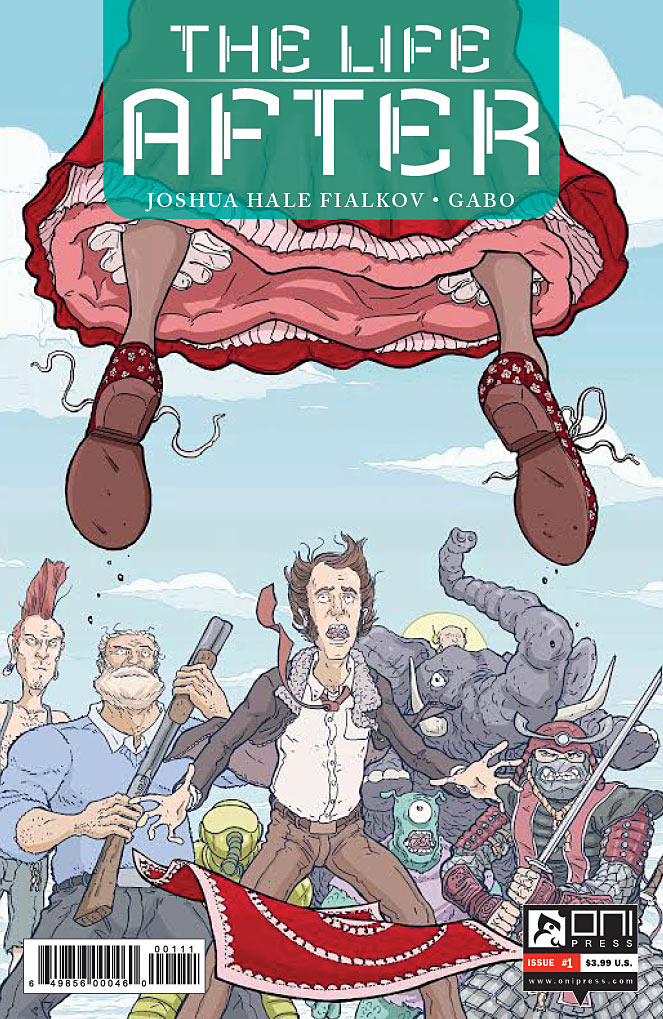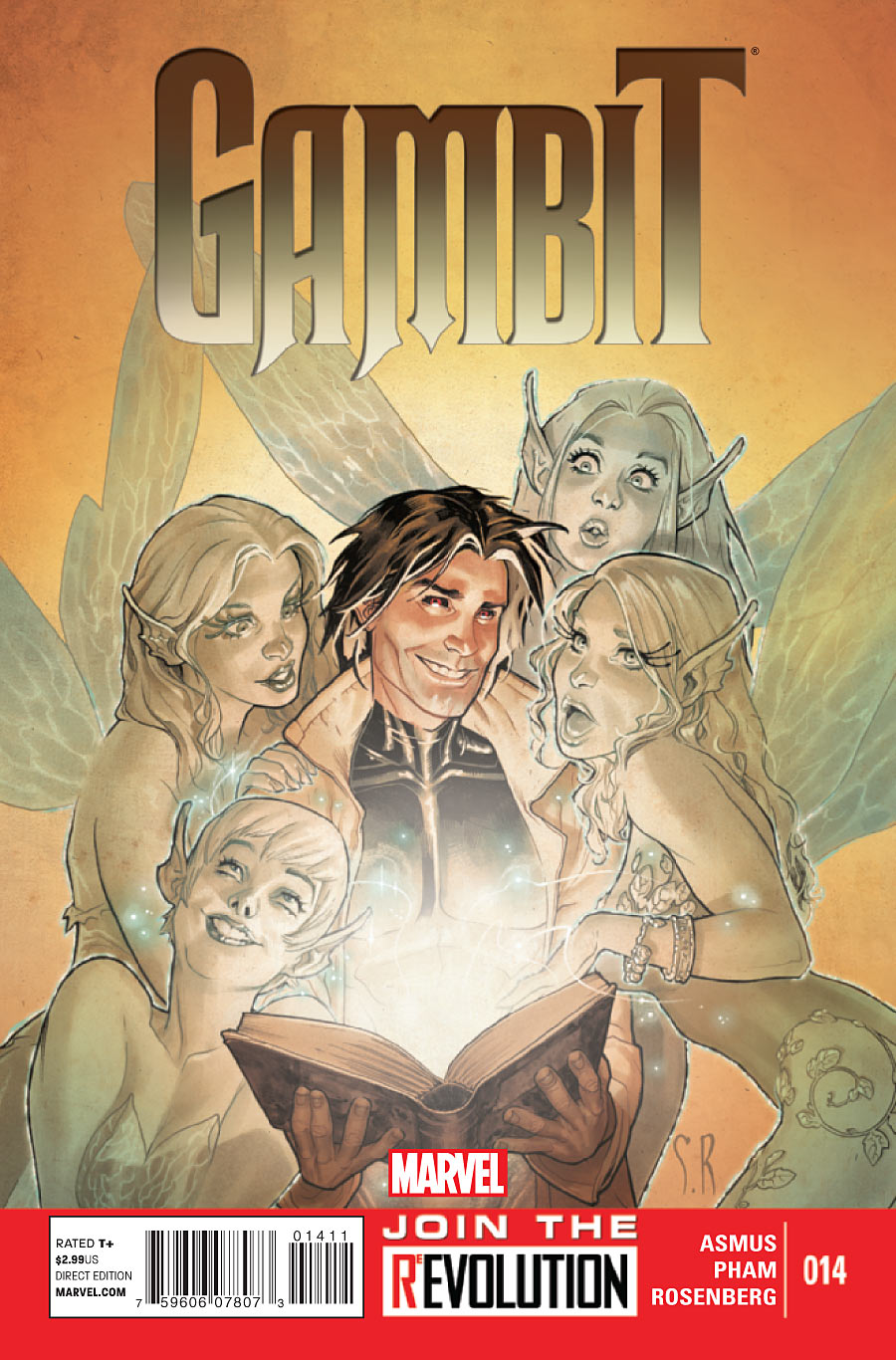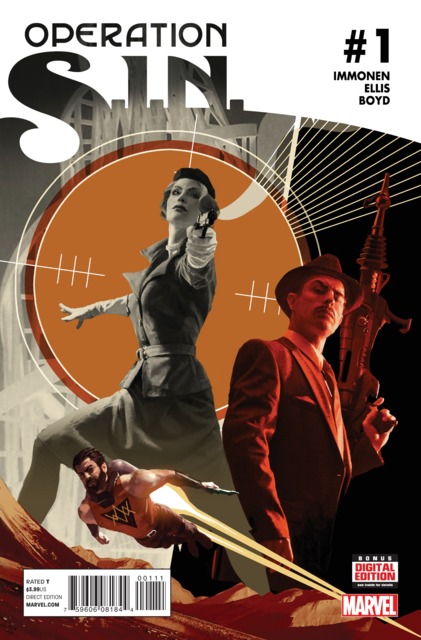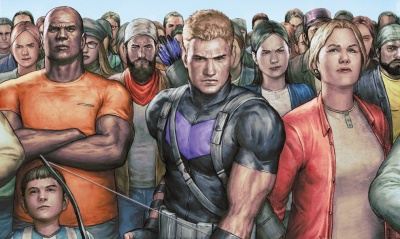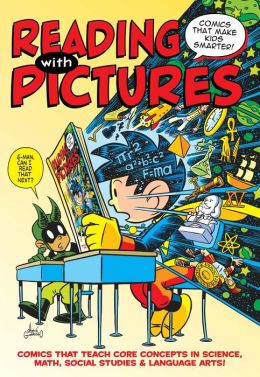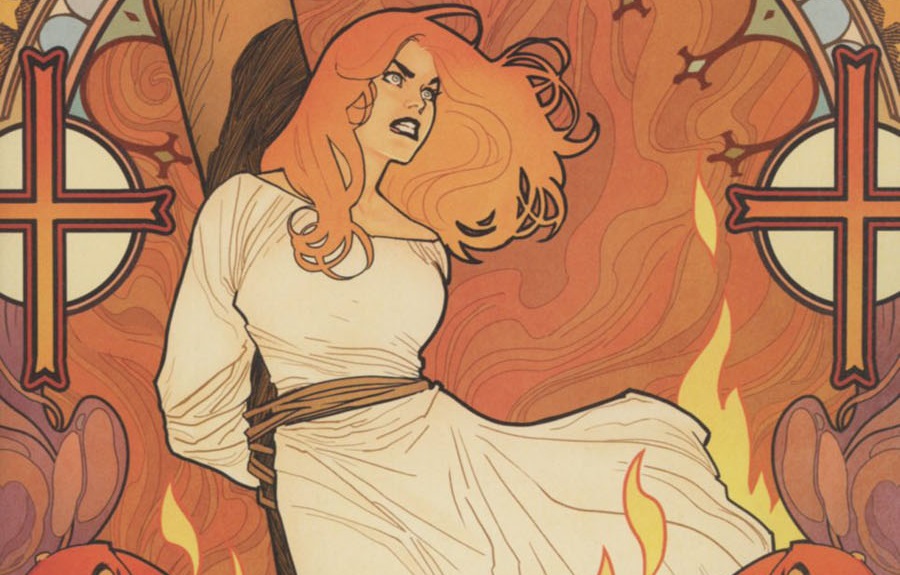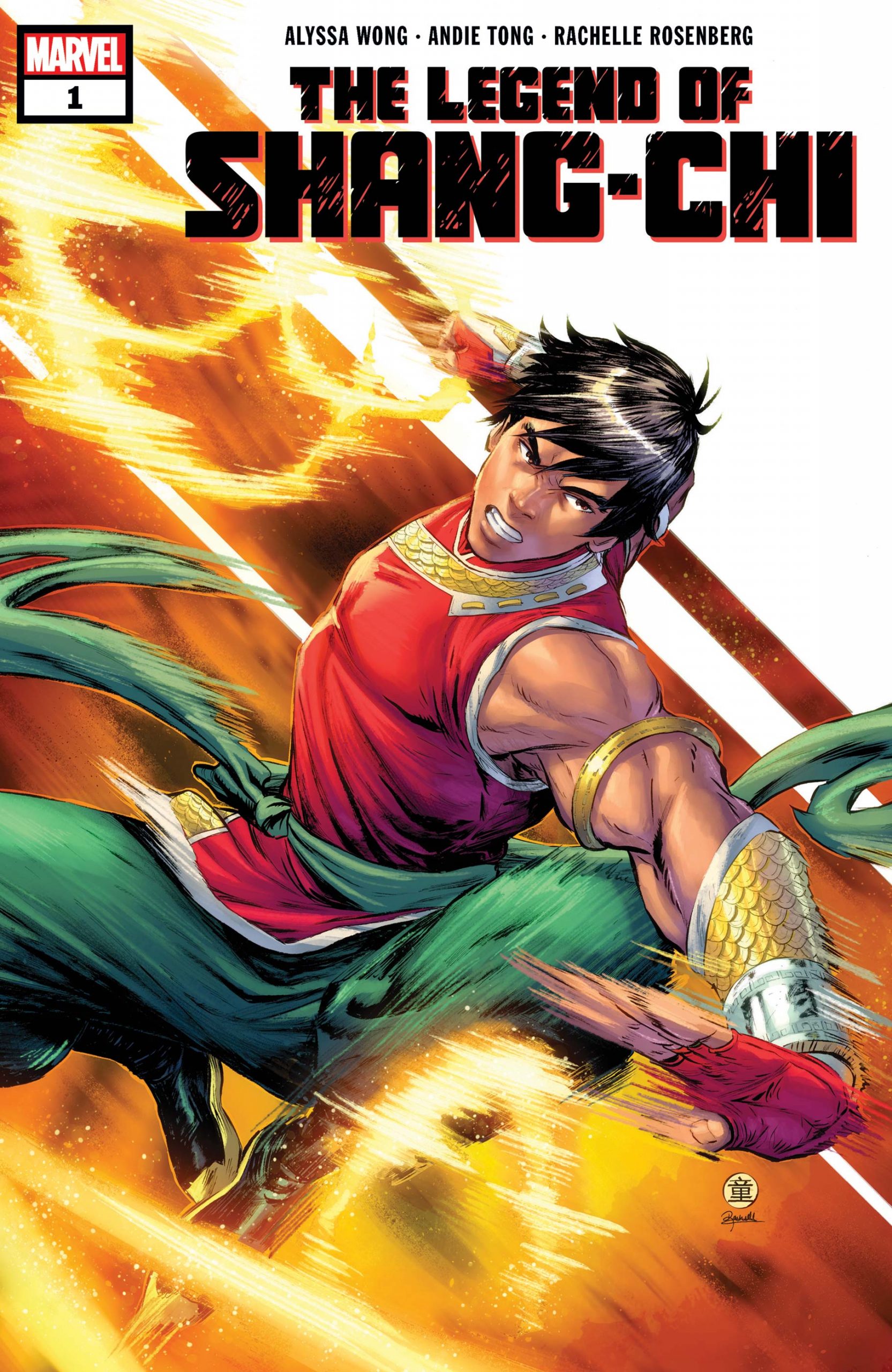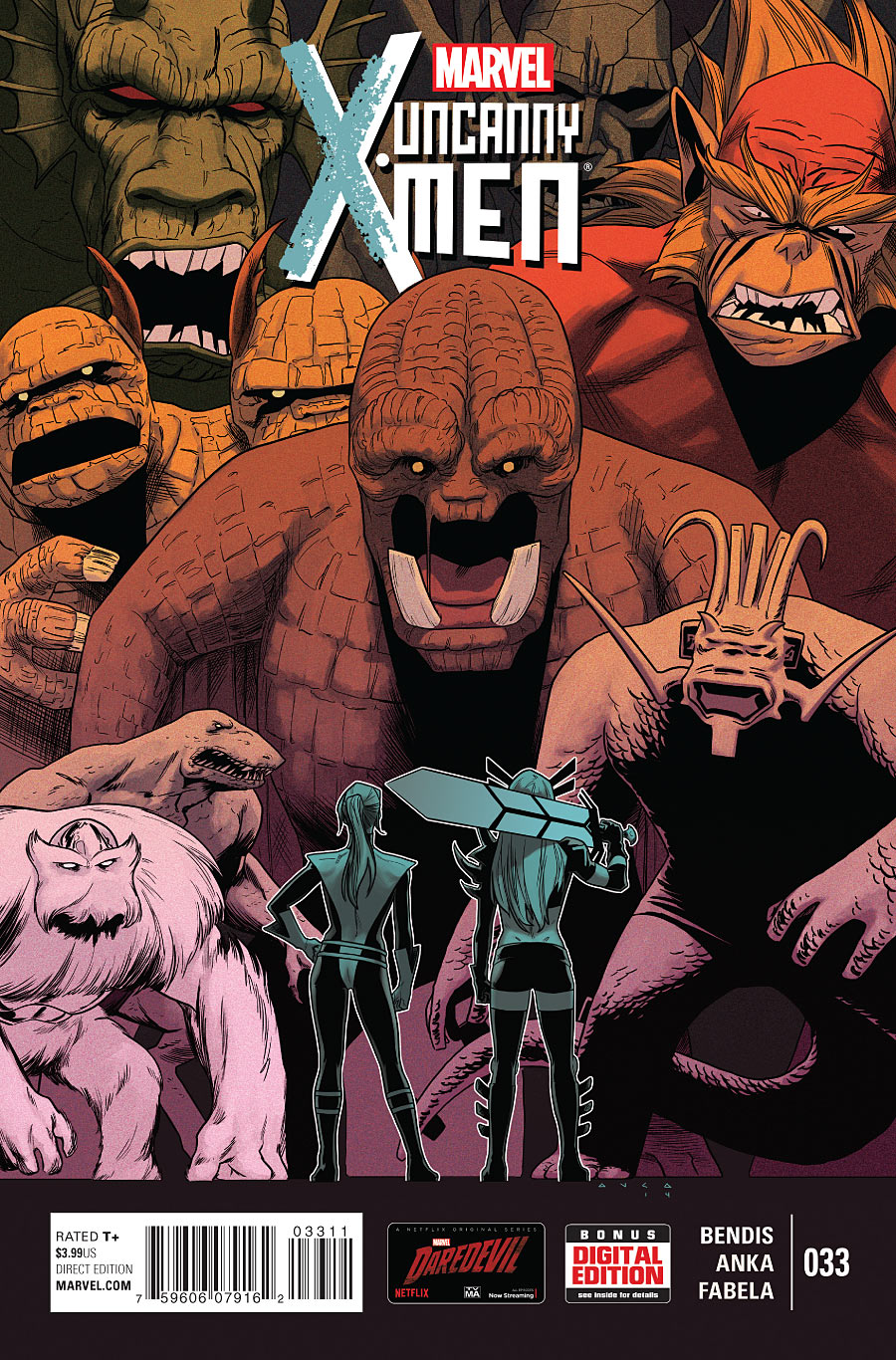The Life After #1
Written by Joshua Hale Fialkov (@JoshFialkov)
Illustrated and Colored by Gabo (@galvosaur)
Lettered by Crank! (@ccrank)
Review by Joey Braccino
Purgatory meets 1984 in The Life After #1, the latest new series from indie publisher, ONI Press. Written by up-and-comer Joshua Hale Fialkov (Elk’s Run & Ultimate Comics: Ultimates & FF) and illustrated by Gabo (aka, Gabriel Bautista, Jr.), The Life After is a strange little comic book about a hapless protagonist named Jude, who is just another normal, average, miserable cog-in-the-machine of this life that suddenly starts seeing visions of people’s deaths from the past, present, and future.
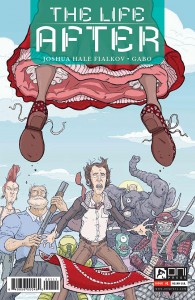
Yeah, it’s a total trip.
Fialkov expertly captures the humdrum Myth of Sisyphus that is Jude’s life in the first few pages of The Life After #1. Jude “fill[s] out forms which allows someone else to fill out a form that in turn allows someone else to fill out another form. It’s extremely necessary, but not important.” If that’s not Absurdism in a nutshell, I don’t know what is. Jude’s life—as is often the case with, well, all our lives—is ultimately not very important; it’s marked by sunrises and sunsets (that Jude can time to the very minute), crappy TV shows, and missed opportunities. But life is necessary, so Jude continues living and, in the instigating incident for the entire story, makes a decision to finally talk to the girl on the bus that he sees everyday.
When he touches the girl’s arm, Jude is shocked (pun!) to see the life and death of a 19th century prostitute. What follows is a series of bizarre flashbacks and flashforwards to the deaths of space aliens, bus drivers, men, women, and children. The last half of this book is absolutely insane in a non-threatening, abnormally-blasé sort of way, almost as though Fialkov wants to maintain the monotonous tone of Jude’s previous life while thrusting our protagonist into his extraordinary life after.
It works, and it makes for a fascinating, jarring, unsettling reading experience. The other angle that Fialkov is working with is the implication that the dullness of everyday life is actually manufactured by an omniscient, omnipotent surveillance state comprised of… well, those of you that have seen The Cabin in the Woods will recognize the conceit immediately. It’s a wonderful little speedbump in what could have otherwise ended up being a straight religious allegory, making The Life After a much more unique book.
Gabo’s artwork is perfect for Fialkov’s ironic slife-of-life tone. Reminiscent of Carmine Di Giandomenico’s work on X-Factor or the aesthetic of Gabriel Ba & Fabio Moon, Gabo’s art here is both deceptively “normal” and subtle in its idiosyncrasy. There is something lurking and lingering in each panel, a bit of unease that threatens to break through the perceived normality, which perfectly parallels Fialkov’s thematic intent. Crank!’s letters also capture this quirkiness, leaning more towards the cartoon-esque that the more mainstream mixed letter format.
Verdict
Worth a look, particularly for readers who want something very much out of the box. Mixing religion, dystopia, and the mundane, The Life After will take you on a trip across time, space, and the (after)life. Check it!

